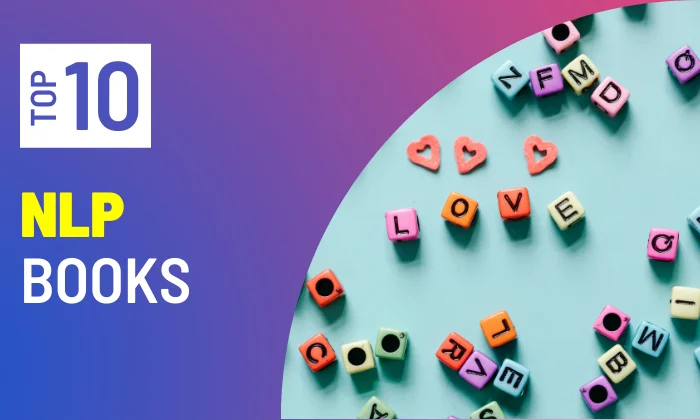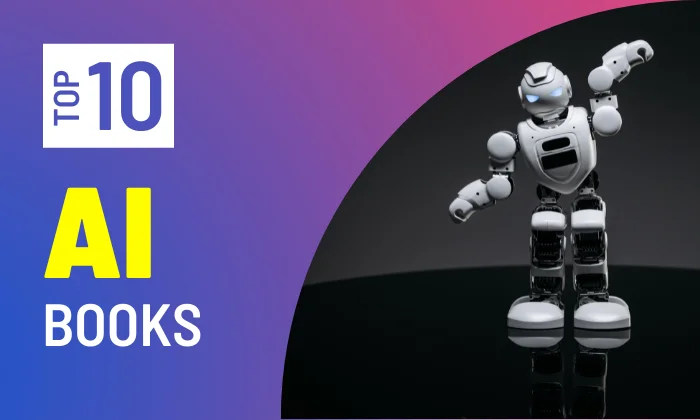Natural language processing (NLP) is a field of computer science, and more specifically, a branch of artificial intelligence (AI), that provides computers the ability to understand text and spoken words in the same way a person can do. These are the top 10 NLP books that will help you learn about Natural Language Processing.

1. Natural Language Processing with Python: Analyzing Text with the Natural Language Toolkit
By Steven Bird, Ewan Klein, Edward Loper
This book consists of concepts related to language technologies, text prediction, text translation, and text suggestion. The programmer will use a wide range of language data structures to access highly annotated datasets, and will also learn the key techniques for assessing the content and structure of written communication.
This book will teach you how to use the Python programming language and the Natural Language Toolkit (NLTK) open-source package to perform natural language processing tasks and coding. This book will be both entertaining and extremely useful if you are interested in designing online apps, analyzing multilingual news sources, or documenting endangered languages.
2. Practical Natural Language Processing: A Comprehensive Guide to Building Real-World NLP Systems
By Sowmya Vajjala, Bodhisattwa Majumder, Anuj Gupta, Harshit Surana
Several books and courses use toy use cases and well-defined datasets to handle natural language processing (NLP) problems. This will help to design, iterate, and grow NLP systems in a business setting and tune them to specific industry verticals.
Software developers and data scientists will learn how to manage the complexity of options offered at each stage of the process. This book will walk you through the steps of developing real-world NLP solutions that are integrated into larger product settings. The reader will know, how to customize the solutions for various industry verticals such as healthcare, social media, and retail. The reader will also learn fine-tuning of NLP solutions, the spectrum of problem statements, NLP datasheets, etc.
3. Natural Language Processing in Action: Understanding, analyzing, and generating text with Python
By Hobson Lane, Hannes Hapke, Cole Howard
This book will guide you through the process of developing machines that can read and interpret human language. In it, the reader will use freely available Python libraries to extract meaning from text and then respond to it.
As you solve real-world problems like extracting dates and names, writing text, and answering free-form queries, the book expands standard NLP methodologies to include neural networks, current deep learning algorithms, and generative techniques. This book demands a basic understanding of deep learning as well as intermediate Python skills.
It includes several NLP-related language concepts like Keras, TensorFlow, Gensim, and Scikit-learn, NLP based on rules and data and pipelines that can be scaled.
4. Hands-On Python Natural Language Processing
By Aman Kedia, Mayank Rasu
This book begins by introducing you to the field of natural language processing (NLP) and its applications, as well as the modern Python libraries that the reader will use to develop NLP-powered apps. Scaled. Practical examples will teach you how to develop fairly advanced NLP applications as well as cover various techniques and obstacles in deploying NLP applications in the real world.
The reader will learn how to perform essential NLP tasks like text categorization, semantic embedding, sentiment analysis, machine translation, and creating a chat-bot with machine learning and deep learning approaches.
By the end of this NLP book, the reader/programmer will be able to deal with language data, utilize machine learning to find patterns in text, and be familiar with the latest NLP advances.
5. Deep Learning for NLP and Speech Recognition
By Uday Kamath, John Liu, James Whitaker
This textbook describes the Deep Learning Architecture and its applications to diverse NLP tasks such as document classification, machine translation, language modeling, and speech recognition.
This textbook covers Deep Learning methods applicable to this language, presents workpiece methodologies, and includes real-world case studies with code for hands-on practice. The first section has three chapters that introduce readers to the subjects of natural language processing (NLP), speech recognition, deep learning, and machine learning through basic theory. The second section’s five chapters teach deep learning and numerous topics for voice and text processing, such as word embedding, artificial neural networks, and speech recognition foundations. The third section contains five chapters that discuss topics such as attention mechanisms, memory-enhanced networks, transfer learning, domain adaptability, and many more.
6. Natural Language Processing with Python and spaCy: A Practical Introduction
By Yuli Vasiliev
This book will teach you how to smoothly and quickly construct NLP applications such as chatbots, text-condensing scripts, and order-processing tools. The reader will know how to properly extract meaning from text using the spaCy library. This book will also help by upgrading the skills in a way you will know what nouns, verbs, and other parts of speech to look for. You will also learn Syntactic dependency parsing which is the process of determining the relationships between words in a phrase and how to categorize proper nouns into groups like persons, organizations, and places
The reader will also learn how to turn statements into questions to keep a conversation going. By the end of the book, the reader will be able to create NLP applications using Python and spaCy.
7. Advanced Natural Language Processing with TensorFlow 2
By Ashish Bansal
This book provides an excellent balance of theoretical and practical features of trending and advanced NLP approaches. The book focuses on potential uses of NLP, language production, and dialogue systems. It teaches how to use popular libraries like Stanford NLP and SpaCy to apply pre-processing text principles like tokenization, parts of speech tagging, and lemmatization.
It discusses practical strategies for simplifying the labeling of textual data. The book also includes a working code for each tech aspect that may be adapted to your specific use cases. By the end of the book, the reader will have a thorough understanding of the tools, methodologies, and deep learning architecture employed in the solution of challenging NLP problems.
8. Natural Language Processing with PyTorch: Build Intelligent Language Applications Using Deep Learning
By Delip Rao, Brian McMahan
Natural Language Processing (NLP) opens up endless possibilities for solving challenges in artificial intelligence, allowing businesses like Amazon Alexa and Google Translate to exist. If you’re a developer or data scientist who is new to NLP and deep learning, this practical article will show you how to use PyTorch, a Python-based deep learning framework, to implement these methods.
Authors give you a solid foundation in NLP and deep learning methods. They show you how to use PyTorch to create applications with rich text representations that are customized to your problems. Each chapter of the book contains a variety of code examples and pictures for the interested reader.
9. Transformers for Natural Language Processing
By Denis Rothman
The book takes you through three different stages of training. You will learn about transformer architectures in the first section, starting with the fundamental transformer and progressing to ROBERTA, BERT, and DistilBERT variants.
In the second stage, you will get to know how to train smaller transformers that can outperform GPT-3. Natural Language Understanding (NLU) and Natural Language Generation (NLG) transformers will also be applied. As a final step, you’ll learn advanced linguistic approaches, including how to optimize the use of social network datasets and how to spot bogus news.
A scientific viewpoint on transformers is presented in this book, and readers will be equipped to apply pre-trained transformer models produced by tech giants to diverse datasets.
10. The Big Book of NLP, Expanded
By Shlomo Vaknin, Marina Schwarts
This book is well-equipped with many NLP patterns. One can say it’s a dictionary of NLP. It contains approximately 350 NLP techniques, strategies of coding, and patterns. It is an easy-to-understand book. In addition to foundations such as the Swish pattern and The Phobia Cure, the approaches also contain more complex and innovative techniques like The Nested Loops method and Learning Strategies.
Many of these strategies have never been published before and are unique. The patterns are also constructed with great care and tested to ensure that they are clear and easy to follow, unlike most other NLP books and programs.
Stay tuned to AiHints for more insightful tutorials on web development, programming, and artificial intelligence. Happy coding!


